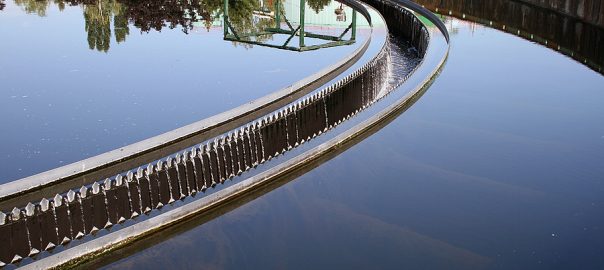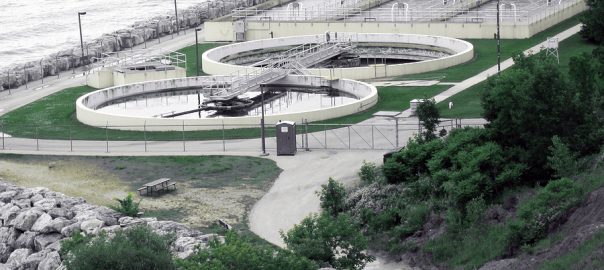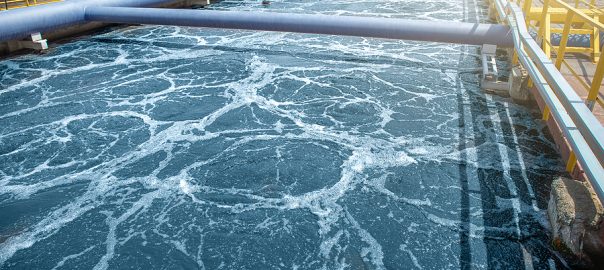
Water treatment structures date back to the years BC. Records in Ancient Greek and Sanskrit writings go back as far as 4000 BC detailing the steps used to clean and treat water. They’d boil or expose the water to sunlight and filter it through charcoal to remove odors and unpleasant tastes and make it clear instead of cloudy. Ancient Egyptians’ records showed they’d use alum to settle cloudy water.
Those are the earliest recorded methods used to treat water. Technology has changed a lot over that time. Wastewater treatment plants have come a long way. Take a closer look at the evolution of wastewater treatment over the centuries.
Filtration Becomes a Popular Option for Removing Particles
While the Ancient Romans and Egyptians may have been the first to focus on filtration, the method of filtration would change over the years.
To treat water, you had to also look at turbidity. What is turbidity? It’s a measurement of particles like organics, sediment, etc. in water. When water is turbid, it’s cloudier.
In the 1800s, Europeans used sand, which was readily available, to filter water. Cholera outbreaks in the 1800s would raise the awareness of needing more than filtration as microscopic organisms, bacteria, and viruses weren’t always caught with filters.
This was especially important in 1855 when Dr. John Snow proved cholera was a waterborne illness. Louis Pasteur also demonstrated this when he demonstrated how microscopic organisms passed through things like milk and water, leading to pasteurization. Filtration wasn’t enough.
Facilities for Treating Wastewater Were Also Necessary
Filtering wastewater was only a small part of the process. As past generations learned, there also had to be a way to get wastewater to that facility and ponds, vats, or pools that would store the wastewater while it was treated. This led to advancements in the structures used for treating the water.
The Indus Valley Civilization
The Indus were the first culture known to have indoor plumbing. They had terracotta pipes that led from buildings to brick-lined drain ditches in the city, where waste went into underground tunnels and back into the environment. The problem was that no one at that time understood the impact this untreated sewage had on the soil and water supplies in the area.
The Rise of Pollution in the 18th and 19th Centuries
Getting back to the Indus, it wasn’t until the Industrial Revolution that people understood the issues surrounding untreated sewage returning to rivers, streams, lakes, and oceans. As urbanization increased people flocked to cities for work.
You’ve probably heard of the past when people used buckets instead of a working toilet and emptied those buckets into channels along the road. Eventually, all of that waste ended up in rivers. The Thames in London was one of them.
Wastewater from industries also ended up in the Thames, but the tributaries leading to the Thames were where Londoners and outlying communities gathered their drinking water. Essentially, people were drinking sewage water and making themselves sick with diseases like cholera and typhoid. Better wastewater treatment systems became an urgency.
The Metropolis Water Act was passed in 1952, which banned the use of water from the Thames. People and water delivery companies had to start sourcing water from other areas. The use of sand and crushed shells was also required as a means to purify water. But, it didn’t stop the “Great Stink of 1858.” All of the waste in the Thames heated up during an unusually hot summer. The city reeked of raw sewage, which spurred the need for a better solution.
In 1865, London’s first wastewater treatment plant was built. It used gravity to settle waste in the water so that those solids could then be removed before the water went into the Thames. It wasn’t perfect, but it was a start.
As science learned more about raw sewage, the need for biological treatments came into play. The activated sludge process, which is still used today, was established in 1914. Microorganisms were used to help feed on the organic matter in wastewater and help break it down more quickly.
The First Laws Regarding Wastewater Hit the U.S.
While other countries went through their own woes regarding wastewater, the U.S. watched the population grow as people left Europe for America. Per the 1900 Census, the population reached 76.3 million that year. New York, Pennsylvania, Illinois, and Ohio were the most populous states at that time. Wastewater issues were arising and regulations were needed. Therefore, the U.S. passed The Federal Water Pollution Control Act of 1948
Surprisingly, the first major law in the U.S. didn’t pass until 1948, but it wasn’t as good as it needed to be, so drastic changes were made to it in 1972. Renamed The Clean Water Act, it set national regulations for the release of wastewater into U.S. waters. It handed the EPA the authority to establish pollution control standards and programs. It finally made it illegal for people to discharge wastewater without a valid permit, and cities wanting to build wastewater treatment plants had construction grants available.
The Future of Wastewater Treatment
Where is the future heading? The environment is a driving factor in wastewater treatment. With water pollution a problem in the world’s streams, ponds, rivers, lakes, and oceans posing a risk to animals, aquatic creatures, and the environment, wastewater treatment has to be done correctly, quickly, and efficiently. Problematic raw sewage dumps from flooding are problematic and have to be addressed.
To address these problems, researchers are looking at a few specific areas of water treatment operations.
Advanced Treatment Requirements
You’ve probably heard about microplastics. These tiny particles of plastic are being found on everything from bees to the blood of humans. There are also PCBs, a manmade forever chemical that is tied to cancer and developmental issues in fetuses and children.
Finding a way to remove microplastics from wastewater is important, but it has to be done cost-effectively, and the treatments used have to get as much microplastic and PCBs as possible, which can be a big hurdle to overcome.
Artificial Intelligence, Automation, and Smart Technology
Artificial intelligence, AI for short, automation, and smart technology are certain to play a big role in helping wastewater treatment plants optimize their performance and lower energy consumption. With smart technology, operators won’t have to drop everything to go check on settings or test results, they could be doing a hands-on task and get insights through voice commands.
AI and automation can analyze and make immediate adjustments without needing a wastewater treatment plant operator to drop everything and go adjust settings. It will be possible for engineers to get reports when they’re off-duty. If there’s an emergency, they’ll get a notification. Otherwise, the AI technology and automated system monitors and adjusts to optimize performance.
Pre-Treatment for Industries
Industrial wastewater from manufacturing plants, food processors, and even breweries strains wastewater treatment plants. The extra work needed to treat that wastewater takes more time, energy, and money.
In some communities, it’s becoming a concern and measures are being taken to prevent this additional strain. Smaller on-site wastewater treatment plants are being required to pre-treat water before it goes to the sewers. Grease traps in restaurants also help.
Expanding the use of treated wastewater for irrigation, industrial processes, and even drinking water after further treatment.
Reuse
Across the country, some areas are running out of drinking water. The reuse of wastewater is going to be the future. Some communities are already doing this with great success. Sewer water goes through wastewater treatment and travels to a water treatment section where it’s purified for use as drinking water and typical household use for laundry, showers/baths, and cooking.
Wastewater treatment plants keep evolving, and the introduction of automation and AI to the equipment is expected to make wastewater treatment more efficient and effective. With this technology carefully monitoring flow rates, storm patterns, and processes, energy consumption decreases, which drives down the cost of treating water, which your community will appreciate. Plus, the risks of raw sewage releases decrease, which is better for the environment.
Embrace the future of wastewater treatment by working with an expert. Lakeside Equipment has been helping clean water for close to a century. You won’t find a company with more expertise and insights into cleaning water effectively and efficiently. Talk to Lakeside Equipment about the improvements that set your facility up for the future.






